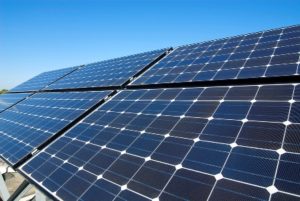- March 13, 2015
- 0 Comments
- In Existing Building Performance High-Performance Construction
- By Robb Aldrich
Ten years ago, seeing a solar electric system on a building was noteworthy. Now they’re popping up everywhere. Lower cost is obviously a big driver of this solar surge; photovoltaic (or PV) system costs have dropped 50-70% in the past 10-15 years. Over the past decade, SWA has helped developers and owners install PV systems on hundreds of buildings. The systems are reliable, they have no moving parts, and they will convert sunlight to electricity for decades.
The cost effectiveness of PV, however, is not always clear. In fact, SWA has seen a concerning trend where the cost benefits of PV are exaggerated. Although costs vary with region and application, installed costs of PV are usually $3,000 – $6,000 per kWSTC.
Then there are incentives, including two key federal programs:
- 30% Federal tax credit
- Accelerated depreciation (for businesses)
Other incentives vary greatly from region to region:
- State, local, and utility rebates or credits
- Sale of Renewable Energy Credits (RECs)
The Database for State Incentives for Renewable Energy (dsireusa.org) has a good summary of these regional incentives. Federal and regional incentives can easily lower PV system costs by 50% — often more.
The final piece in assessing cost effectiveness of PV is the electricity savings. With PV generating electricity for your building, you’ll obviously be paying less to the utility. But how much less? In the Northeast, each 1 kWSTC will usually generate 1,000 – 1,200 kWh each year.
- Residential rates (i.e. for single-family homes or individually-metered apartments) in the Northeast are typically $0.15-$0.25 per kWh
- Commercial electricity rates (including rates for multi-family common meters) are less – usually $0.06-$0.12 per kWh. These accounts also pay demand charges, however — something on the order of $15-$25/kW for the highest period of usage each month.
PV systems obviously offset electric energy charges, but do they offset demand charges? In our experience, the answer for multifamily buildings is often no. Power demand for multifamily buildings is usually fairly level. The small peaks usually occur early in the morning (when residents wake up and head out for the day) and in the evening (when residents get home, lights go on, etc.). As PV produces the most electricity in the middle of the day, these peaks aren’t much affected.
So the concerning trend is this: some building owners are receiving quotes for PV systems that calculate savings based on much higher rates. Proposals often promise utility savings of TWICE what system owners actually see.
That’s not to say PV is a loser. PV certainly does generate electricity cleanly and reliably, and there are still many applications where PV systems do make economic sense. But it’s not a slam-dunk; take a close look at the assumptions when weighing costs and benefits.

